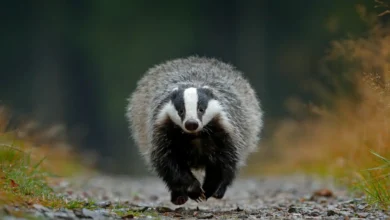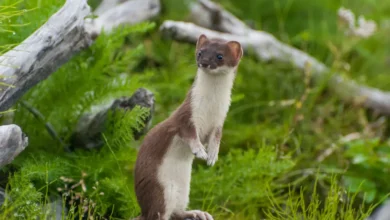Monkeys are preyed upon by a variety of predators. As medium-sized mammals, monkeys make for a nutritious meal and are hunted by carnivorous animals who share their habitats.
With over 260 known monkey species inhabiting diverse environments across the tropics, monkeys must adapt to avoid different predators in rainforests, woodlands, savannas, mountains, and more.
Monkeys employ numerous survival strategies against predators. Many live in social groups and have developed sophisticated alarm calls to alert others to approaching dangers. Some species are nimble climbers, able to quickly ascend into the canopy to evade predators.
Others may mob or harass their pursuers. But without human protection, monkeys inevitably fall victim to hungry carnivores in the wild. In this article, we will explore the main predators that eat monkeys and how monkeys try to avoid being prey.
[ez-toc]
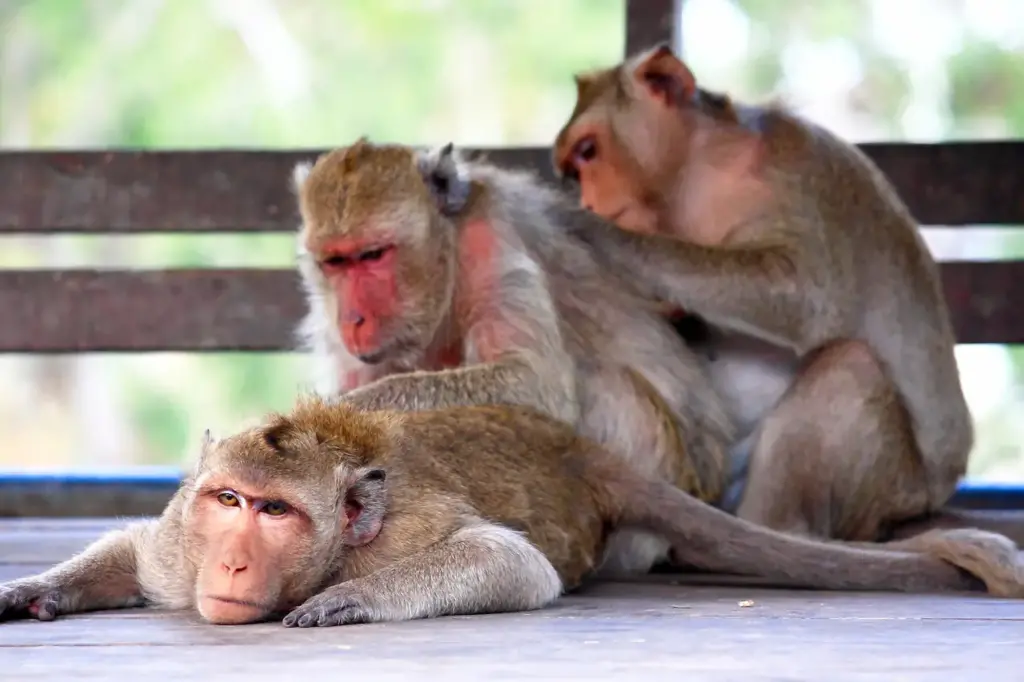
Leopards
Leopards are powerful big cats that live in forests and woodlands across Africa and Asia. A leopard’s tan coat spotted with dark rosette patterns provides the perfect camouflage amid dappled light and shadows.
Leopards stealthily stalk through vegetation, quietly approaching monkey troops. They hide and lie in wait for hours for the right moment to attack.
Leopards can then explosively charge out, rushing at their prey to seize a monkey from the ground or, with a massive vertical leap, swat a monkey from high up in a tree.
They use their strength and sharp claws to grab and hold monkey prey as they bite down with their formidable jaws and teeth, capable of crushing skulls.
Leopards have a particular taste for monkeys and often hoist and drag large kills like colobus monkeys weighing up to 60 pounds high up into forked tree branches, out of the reach of competitors like lions or hyenas.
There, the leopard wedged in the tree can peacefully feast for several days until the carcass is stripped clean.
Harpy Eagles
Harpy eagles are enormous aerial predators soaring high above rainforest canopies in Central and South America with wingspans up to around 7 feet wide.
They perch patiently for long periods, using their incredibly sharp binocular vision to continually scan the forest below for signs of animal movement, able to spot monkey troupes moving from extraordinary distances.
Harpy eagles are also highly sensitive to auditory cues and can even hear monkey vocalizations from far across the landscape to target areas for patrol.
Once they pinpoint monkeys, harpy eagles enter rapid descent, folding back their wings and plunging feet first at speeds over 50 mph.
At the last moment before impact, they thrust out their powerful talons and seize an unlucky monkey victim, clasping it firmly as their momentum carries them both back upwards.
Harpies proceed to find a secure perch to clench their prey while they methodically tear it apart with their hooked beak and feed.
They typically eat medium-sized monkeys like spider monkeys, and capuchins and smaller primates like tamarins and marmosets. The remains and bones of monkey meals have been found piled beneath nesting harpies’ favoured roost sites.
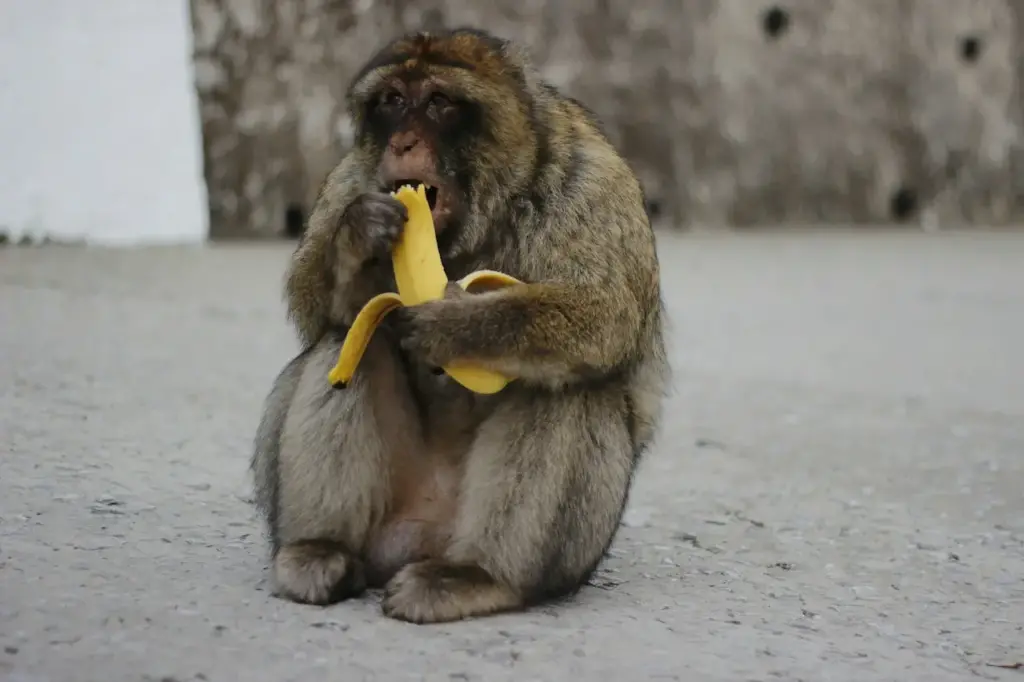
African wild dogs
African wild dogs are highly athletic mammalian pack hunters living in woodlands and savannas below the Sahara. They have huge rounded bat-like ears, dark fur speckled with white and brown, and bushy tails with a white tip.
African wild dogs form intensely close-knit social groups for hunting, moving together in packs of 6 to 20 adults and yearlings along with puppies.
They cooperate to range across wide stretches of territory each day in search of monkey prey like vervets or baboons as well as other animals from antelope to hares. African wild dogs rely on exceptional endurance running to pursue faster prey until the target begins to tire.
Their hunting strategy is based on taking turns chasing and harassing a monkey until it slows down from exhaustion, enabling the pack to finally catch the lagging monkey as the remainder of the group catches up.
Even if a fleeing monkey manages to initially escape danger by rapidly ascending into a tree, African wild dogs will wait patiently below for hours, unwilling to leave the trapped monkey.
Eventually, the monkey has to come down as the sun moves and temperatures rise, exposing it once more to the tireless pack below who finally run it down.
Consequently, despite their impressive team tactics and athletic abilities, a troop of monkeys pursued by African wild dogs has little hope of eluding them unscathed over protracted distances and time.
Pythons
Pythons are non-venomous primitive snakes, including the reticulated python, African rock python, and Indian python inhabiting tropical rainforests and woodlands. Their elongated muscular bodies can reach over 20 feet long, enabling them to coil entirely around large prey.
Pythons lack the venom apparatus of advanced snakes, instead relying solely on constriction to kill prey. Their suppleness enables them to climb and position themselves in tree branches alongside monkey travel routes, hiding amid the leaves and shadows.
Pythons lay stretched out head to tail along a thick branch or wound in irregular loops. When an unsuspecting monkey finally comes close while climbing or jumping through the canopy, the python strikes out in a lightning-fast blur.
It bites down with dozens of needle backward curving teeth to get an initial grip on the monkey as its powerful body starts coiling around the prey, seeking to envelop it entirely. The python squeezes with each breath the monkey frantically takes as its ribs are slowly crushed together.
The unrelenting pressure each time the monkey exhales eventually leaves it unable to inhale again. Within a few minutes, the monkey succumbs to asphyxiation and dies, still trapped within the python’s coils.
The snake then spends the next several hours slowly unhinging its flexible lower jaw to swallow its meal whole.
Crocodilians
Crocodilians are semi-aquatic ambush predators that lurk patiently half-submerged near river and lake banks and in coastal mangrove swamps, ready to attack any monkeys or other prey that approaches.
They include the Nile and mugger crocodiles of Africa and Asia, the American alligator, and South America’s spectacled caiman and gharial.
Crocodilians are masters of concealment despite their immense size, floating with only their eyes, ears, and nostrils visibly poking above the waterline amid floating plants and debris.
Crocodilians instinctively hold their attack only briefly if they spy a troop of monkeys arriving to drink or wade through shallows. As soon as an individual wanders close to the hidden crocodilian, the reptile powerfully lashes out in an explosive lunge.
It seizes the hapless monkey in its vice-like jaws full of conical teeth and instantly pulls the prey underwater into a lethal death roll maneuver.
Spinning and thrashing with the monkey clenched in its crushing maw, the crocodilian rips flesh as the monkey suffers trauma and drowns until dead within minutes.
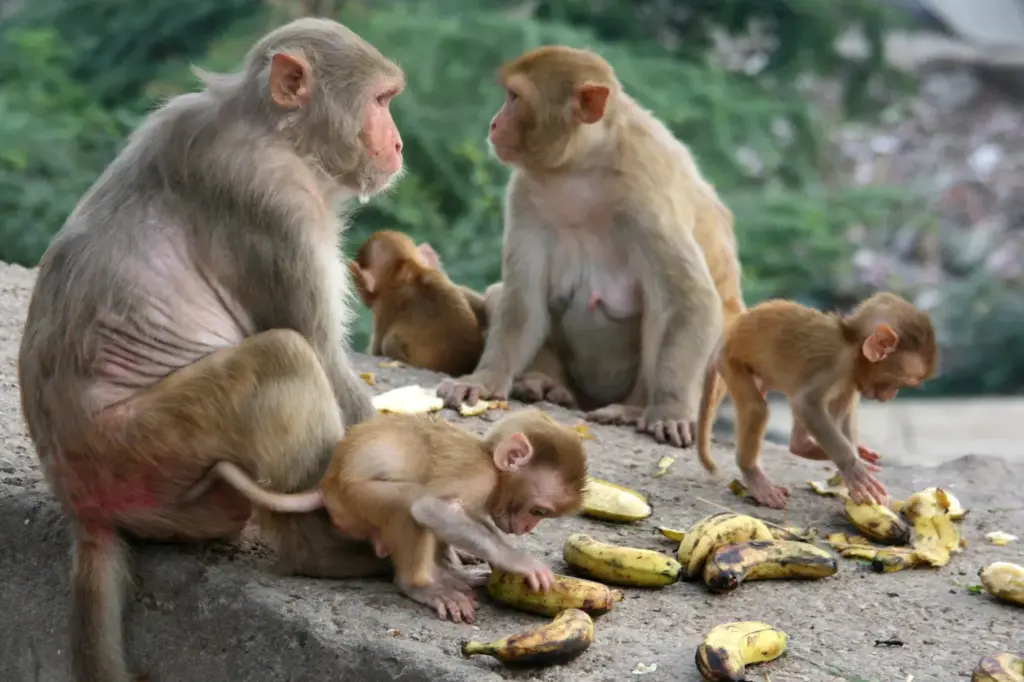
Conclusion
As versatile generalist feeders able to exploit a wide variety of food sources, most monkey-eating predators prey on other animals too. But monkeys often make up a substantial part of their diet.
Monkeys provide a concentrated nutritious meal for big cats, wild canids, raptors, and reptiles. These predators have evolved to regularly hunt and feast on primates.
To survive amid this array of formidable predators, monkeys must remain constantly alert and wary. They depend on strength in numbers in sociable troupes and families.
They also benefit from their agility, climbing dexterity, intelligence, and ability to vocalize warning cries when detecting potential threats.

